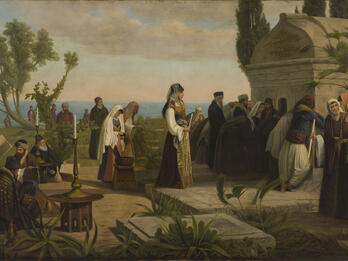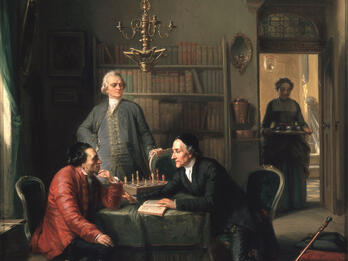Scholarship and Science
The scholarly and scientific ethos permeated Jewish intellectual life in the late eighteenth and nineteenth centuries and resulted in contributions obscure and renowned. The foundations of the astonishing breakthroughs of Jews in the sciences in the twentieth century were laid in this period.
As more academic institutions opened their doors to Jews, scientific methods and professions in the social and natural sciences and medicine became increasingly accessible to Jews. The first efforts in the sciences in this period were often works of translation by individuals hoping to share their knowledge with Jews who could not directly learn about the latest advances in hygiene, medicine, and nutrition. With the advance of the nineteenth century, medicine (alongside the law) became one of the more popular professional choices for educated Jews, who soon began to contribute to myriad aspects of medical and scientific fields as well as to the social sciences. From Joseph Vita Castelli’s letter to a physician friend describing the symptoms of an acute illness to Ignác Goldziher’s foundational work on Islamic history and society, the scholarly and scientific ethos permeated Jewish intellectual life in the late eighteenth and nineteenth centuries and resulted in contributions obscure and renowned. The foundations of the astonishing breakthroughs of Jews in the sciences in the twentieth century were laid in this period.
Perhaps as significant as Jewish scholars’ contributions to their respective fields was their application of scientific methods to their own culture and history. The advent of critical historical thinking about the Jewish past and Jewish texts constituted a monumental break from traditional modes. With rare exceptions, even modern Jews had accepted the narratives and materials of their past uncritically. Neither the German term Wissenschaft nor its incomplete English translation, “science,” do adequate justice to the breadth, rigor, dedication, and manifold materials that this term embraced. “More than footnotes, variant readings and bibliographies,” writes historian Ismar Schorsch, “At the core of modern Jewish scholarship there is a new way of thinking about Judaism. . . . A religious tradition indifferent to the category of time in comprehending itself . . . was suddenly confronted with a mode of cognition that rested on contextual interpretation.”1 The establishment in Berlin, in 1819, of a society to study the materials of Jewish history set off a search for sources and revision of narratives whose repercussions remain with us until this day. On the occasion of the first anniversary of this society, Eduard Gans remarked, “No revolution is more difficult than the overturning and recasting of a state of mind.”2
The university-trained Jewish men (and they were virtually all men), rejected for employment by the very institutions that nurtured them, brought their academic training to the study of Judaism. They hoped to wrest the “curatorship” of Jewish culture from the hands of its Christian antagonists and its traditional rabbinic Jewish guardians. Attempting to fit the materials of the Jewish past into the European academic format was no easy task. It took decades to turn these studies into a new Jewish narrative that would appeal to a broad readership. Not until Heinrich Graetz produced his engrossing and dramatic multivolume history of the Jews, subsequently translated into many languages, did the products of the academic world become popular among Jews around the globe in the nineteenth century.
Over the course of that century, these ideas and ideals radiated out toward other circles of Jewish intellectuals with differences specific to their context. “Études juives” circles in France, for example, saw themselves in a different light than the German Jewish scholars. A notable development was the adoption of scholarly approaches within more traditional circles. Because these practitioners saw themselves as continuing traditions of Jewish scholarship rather than as products of a rupture, they were less apt to distance themselves from more traditional Jewish values. Their contributions in Hebrew came to be known collectively as Ḥokhmat Yisrael.
Notes
Ismar Schorsch, From Text to Context: The Turn to History in Modern Judaism (Hanover, N.H.: Brandeis University Press, and University Press of New England, 2003), 152.
The society was called Verein für Kultur und Wissenschaft der Juden. Schorsch, Text to Context, 213.



